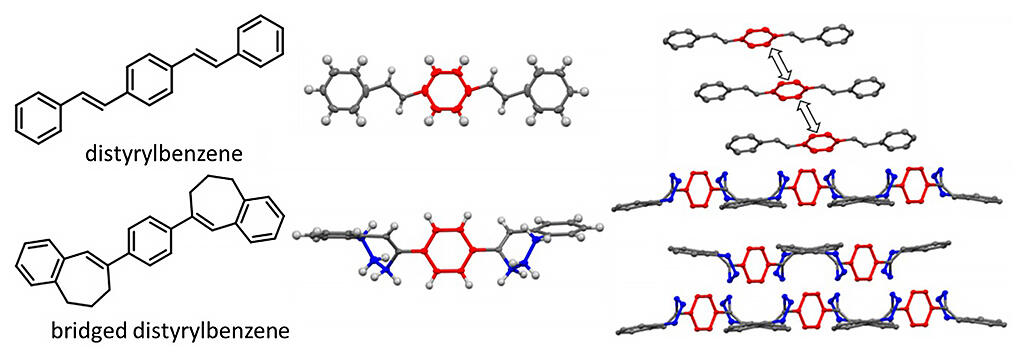A research group led by graduate student Yoshimichi Shimomura and Associate Professor Gen-ichi Konishi of the Department of Chemical Science and Engineering, School of Materials and Chemical Technology, Tokyo Institute of Technology, as well as members of the Department of Chemistry, School of Science, Tokyo Institute of Technology, Kyushu University, Nantes Université, and Kogakuin University, has succeeded in fabricating a solid-state light-emitting material that emits light with very high efficiency from a single molecule by constructing a bridge structure within the molecule of a light-emitting organic π-electron system molecule.

Provided by Tokyo Institute of Technology
In recent years, much attention has been paid to the development of functions of solid fluorescent dyes that emit strong light, and are used in OLED display materials, analysis, and other applications. In order to simultaneously achieve the intended luminescence color and high luminescence efficiency with fluorescent dyes, it is ideal to isolate the molecules in the crystalline state, which has conventionally been achieved by introducing bulky substituents to the dye. However, drawbacks to this method include reduced pigment density and function, and difficulties in processing and synthesis.
The research group used distyrylbenzene, a π-electron system molecule widely used as a blue organic fluorescent dye, as a basic framework, by loosely linking two double bonds around a short hydrocarbon chain to synthesize bridged distyrylbenzene with a seven-membered ring structure.
Examination of the photophysical properties of the bridged distyrylbenzene revealed that it exhibits nearly identical fluorescence spectra in solution, in aggregation, in solid state, and dispersed in film. It also exhibits a high emission quantum yield of over 84% in solid state, indicating monomeric emission.
Single-crystal X-ray structure analysis revealed that the monomer-emitting bridged distyrylbenzene had a crystal structure with alternating twisted π-planes that do not cause intermolecular electronic interactions. With normal distyrylbenzene that does not have the bridging structure, the emission wavelength shifted to a much longer wavelength in the solid state than in solution due to the stacking of π-planes where electronic interactions take place. The volume occupied by the light-emitting site (distyrylbenzene) in the crystal was almost the same with or without the bridging structure.
Associate Professor Konishi explained "Currently, we are working on improving the processability of condensed engineering plastics and developing photo-functional liquid crystals that respond to electric and magnetic fields, with new mesogens (liquid crystal molecules) themselves emitting strong light."
This article has been translated by JST with permission from The Science News Ltd.(https://sci-news.co.jp/). Unauthorized reproduction of the article and photographs is prohibited.




